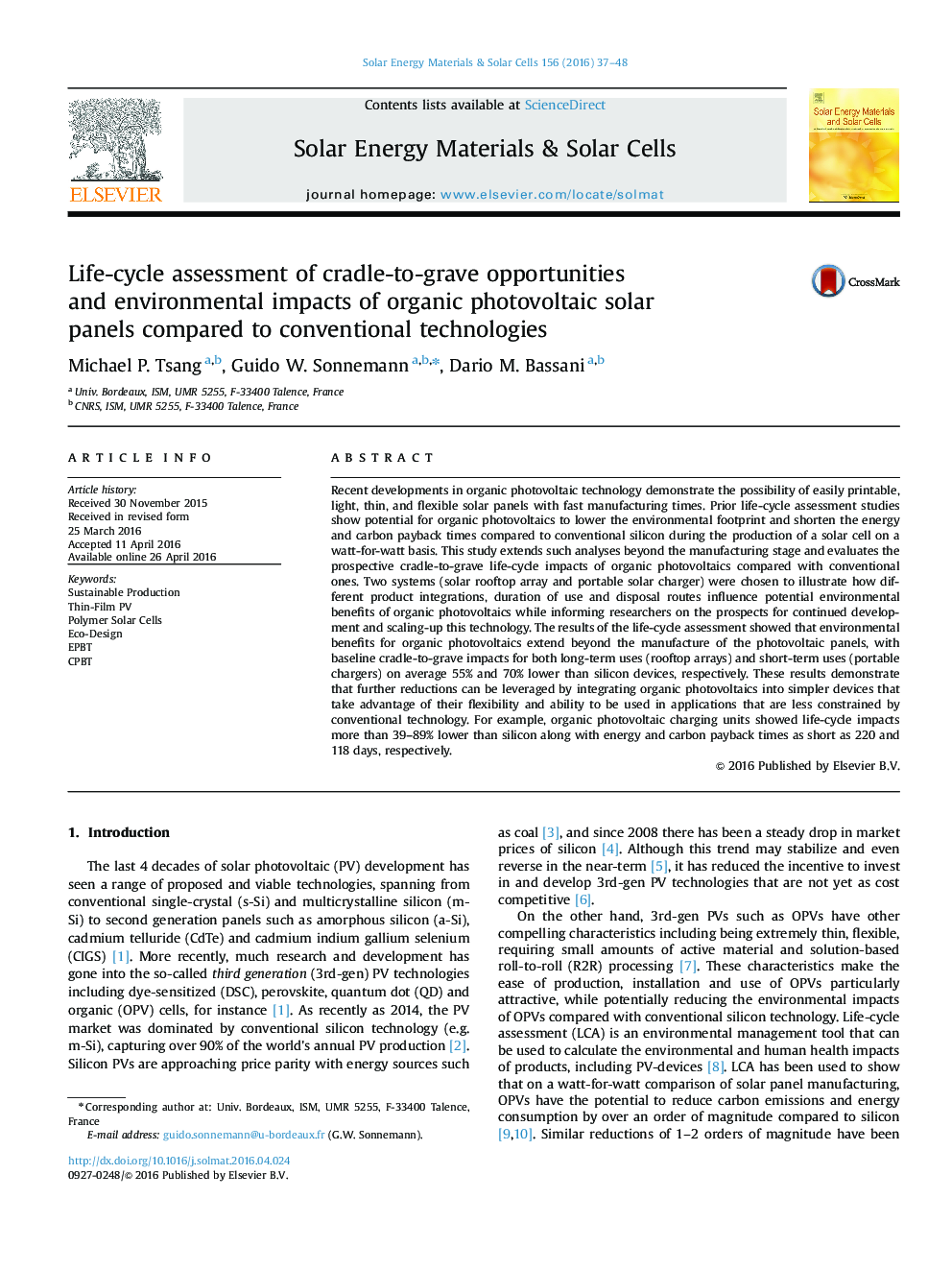| کد مقاله | کد نشریه | سال انتشار | مقاله انگلیسی | نسخه تمام متن |
|---|---|---|---|---|
| 6457653 | 1420666 | 2016 | 12 صفحه PDF | دانلود رایگان |
- Cradle-to-grave life-cycle assessment comparing organic and silicon photovoltaics.
- Prospective OPV applications on solar rooftop arrays and portable solar chargers.
- Consideration of two end-of-life options: landfilling and incineration.
- OPV LCA impacts could be as much as 89% lower than silicon.
- Advances in efficiencies may provide quicker environmental benefits compared with lifetimes.
Recent developments in organic photovoltaic technology demonstrate the possibility of easily printable, light, thin, and flexible solar panels with fast manufacturing times. Prior life-cycle assessment studies show potential for organic photovoltaics to lower the environmental footprint and shorten the energy and carbon payback times compared to conventional silicon during the production of a solar cell on a watt-for-watt basis. This study extends such analyses beyond the manufacturing stage and evaluates the prospective cradle-to-grave life-cycle impacts of organic photovoltaics compared with conventional ones. Two systems (solar rooftop array and portable solar charger) were chosen to illustrate how different product integrations, duration of use and disposal routes influence potential environmental benefits of organic photovoltaics while informing researchers on the prospects for continued development and scaling-up this technology. The results of the life-cycle assessment showed that environmental benefits for organic photovoltaics extend beyond the manufacture of the photovoltaic panels, with baseline cradle-to-grave impacts for both long-term uses (rooftop arrays) and short-term uses (portable chargers) on average 55% and 70% lower than silicon devices, respectively. These results demonstrate that further reductions can be leveraged by integrating organic photovoltaics into simpler devices that take advantage of their flexibility and ability to be used in applications that are less constrained by conventional technology. For example, organic photovoltaic charging units showed life-cycle impacts more than 39-89% lower than silicon along with energy and carbon payback times as short as 220 and 118 days, respectively.
Journal: Solar Energy Materials and Solar Cells - Volume 156, November 2016, Pages 37-48
